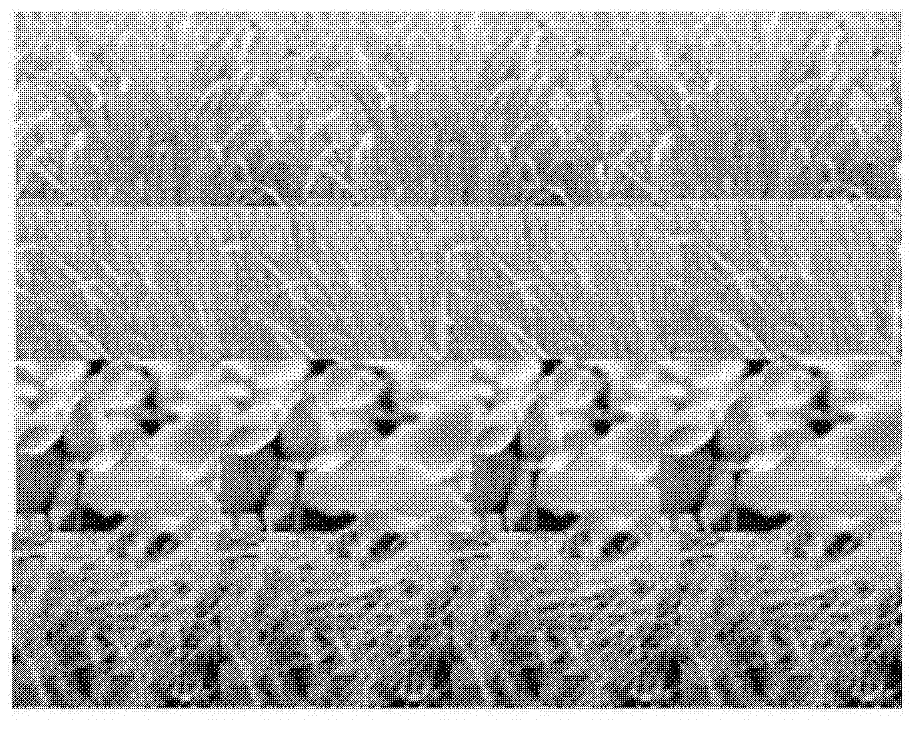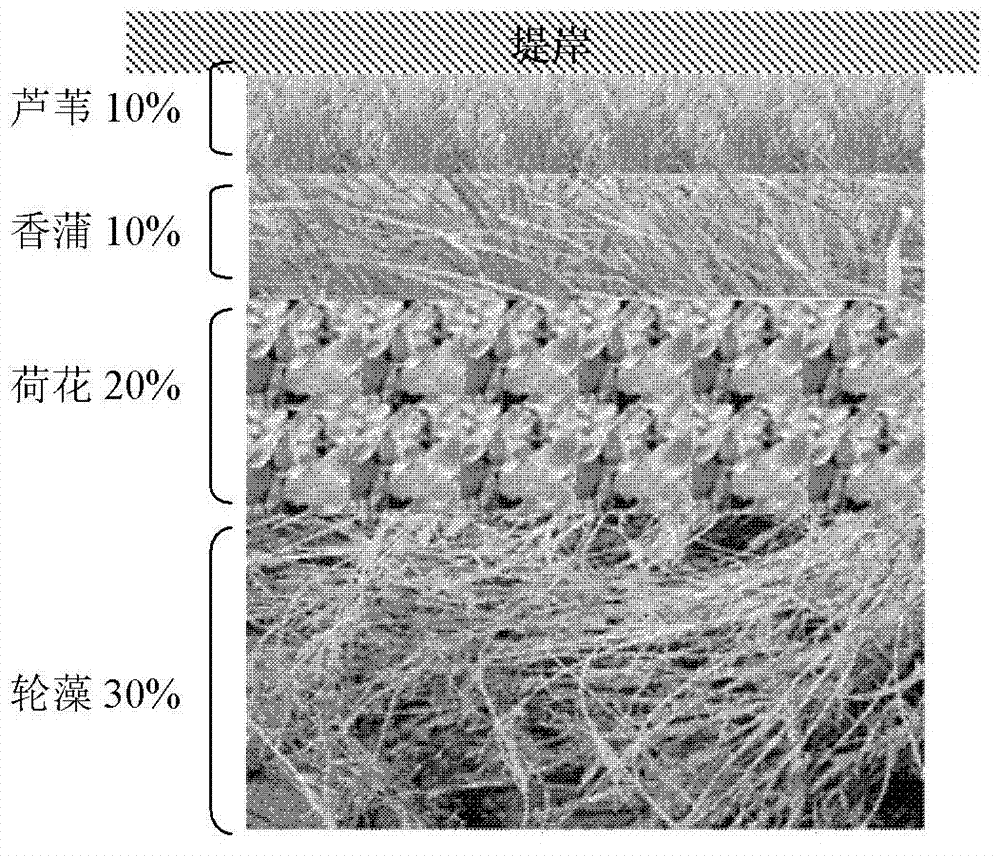Method for controlling lake eutrophication and paludification by using aquatic plant configuration
An aquatic plant and configuration control technology, applied in the field of environmental ecology, can solve problems such as unproven scale effects, reduce nutrient content, and fail to slow down swampy, so as to reduce biological filling, improve stability, and solve problems. Effects of eutrophication problems
- Summary
- Abstract
- Description
- Claims
- Application Information
AI Technical Summary
Problems solved by technology
Method used
Image
Examples
Embodiment approach
[0016] Carry out field research in lake areas and apply this technology in nearshore eutrophic waters. Investigate the degree of water pollution, aquatic plant species and coverage in this area, and at the same time combine the changes in water quality indicators and plant species differences over the years to select the best ratio of aquatic plants and the best location for planting.
[0017] Aquatic plants: If the above-mentioned aquatic plants do not exist in the area, they need to be transplanted and planted. Generally, the four aquatic plants are common indigenous plants in lakes, and the four plants can be mixed according to different coverage.
[0018] 1) Four water depth gradient configuration methods for aquatic plants:
[0019] (1) Four plants and their characteristics:
[0020] Reed: Poaceae, Phragmites genus, perennial herb, suitable for emergent plants in shallow water areas, suitable for planting on banks and embankments. The draft generally does not exceed 0.5...
Embodiment 1
[0034] Aiming at the problems of eutrophication and swamping in the Baiyangdian lake area, the invention is used to regulate the water quality in the lake area to reduce eutrophication and slow down swamping. Indigenous dominant aquatic plants are emergent plants reed, cattail, sagittarius, etc., phytoplankton lotus, water chestnut, etc., and submerged plants are charophytes, eye vegetables, etc. The water depth is 1-2m. According to indoor planting observations, reeds, cattails, lotuses, charophytes, etc. were selected and planted in different proportions in the experimental area enclosed by Baiyangdian Lake. In the same water area, a fence is placed every 15m to isolate it from the outside world, so that it is convenient to observe the effect of water purification. With different plant ratios, a total of 20 fences are arranged for comparison, and a blank control is set up. The frequency of monitoring water quality is once a month, and the monitoring period is from May to Sept...
PUM
 Login to View More
Login to View More Abstract
Description
Claims
Application Information
 Login to View More
Login to View More - R&D
- Intellectual Property
- Life Sciences
- Materials
- Tech Scout
- Unparalleled Data Quality
- Higher Quality Content
- 60% Fewer Hallucinations
Browse by: Latest US Patents, China's latest patents, Technical Efficacy Thesaurus, Application Domain, Technology Topic, Popular Technical Reports.
© 2025 PatSnap. All rights reserved.Legal|Privacy policy|Modern Slavery Act Transparency Statement|Sitemap|About US| Contact US: help@patsnap.com



